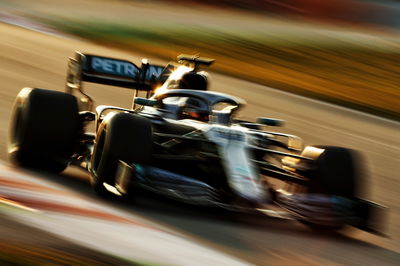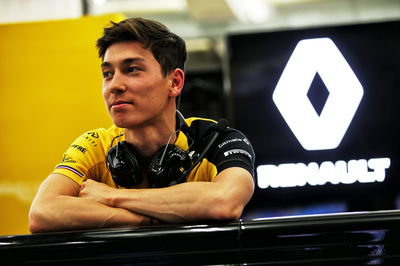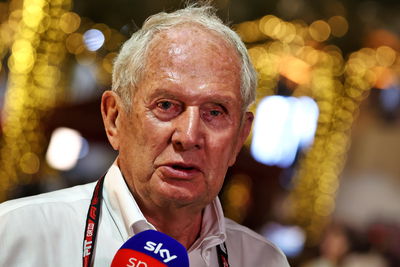The danger of falling into F1’s pre-season testing trap
With car launches, pre-season testing and a sense of heading into the unknown, the start of a new year of Formula 1 is always filled with excitement and anticipation.
The hype builds during what has become known as ‘launch week’, when teams unveil their new challengers and fresh liveries for the upcoming campaign, before things really kick off with winter testing.

With car launches, pre-season testing and a sense of heading into the unknown, the start of a new year of Formula 1 is always filled with excitement and anticipation.
The hype builds during what has become known as ‘launch week’, when teams unveil their new challengers and fresh liveries for the upcoming campaign, before things really kick off with winter testing.
This year’s shortened six-day test, split into two separate periods of running at Spain’s Circuit de Barcelona Catalunya between February 19-21 and February 26-28 will be no different as the new cars hit the track for the first time in anger.
It is easy to get bogged down with lap times but recent years have shown why it is dangerous to read too much into the order winter testing conjures up and take the timing charts at face value. On this occasion, the ‘stopwatch never lies’ saying could not be further from the truth.
In reality, it is hard to make many firm conclusions given it is unclear what fuel loads, aerodynamic specifications and car set-ups each teams are running, and that is not taking into account varying track conditions or tyre compounds. There’s even situations when drivers back off around Circuit de Barcelona Catalunya’s final couple of corners to shield optimum lap times from rivals.
A quick look back at the testing times from 2019 had Ferrari sitting pretty at the top and looking in strong shape. The Scuderia had already been tipped as pre-season favourites.
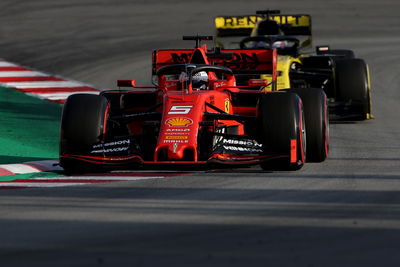
This was partly down to Mercedes’ seeming in trouble and off the pace after the first week of testing, with its W10 not appearing particularly fast nor easy to drive. Negative feedback from drivers Lewis Hamilton and Valtteri Bottas only fuelled the fire and increased excitement among those hoping for Mercedes’ recent domination of F1 to come crashing down.
A significant change to aero regulations over the winter - most notably the introduction of a new front wing concept - had many thinking that Mercedes may have gone down the wrong route and subsequently have its position at the top under threat.
But come the second test, Mercedes rolled out a revised car and suddenly appeared much more competitive, ending the week just 0.003s adrift of Sebastian Vettel’s benchmark time. Suddenly the title race was back on…
There were claims Mercedes had developed a brand new car but in reality it had just played a blinder and fooled its rivals, by launching and initially running with a basic, under-developed car, before unleashing its actual 2019 package in the second test at Barcelona.
The updated, more aggressive W10 that raced at the Australian Grand Prix would go on to win 15 of the 21 races (including the first 10) in 2019 and maintain Mercedes’ remarkable run of success in the V6 hybrid era as it became the first team in F1 history to claim six double world championships on the spin.
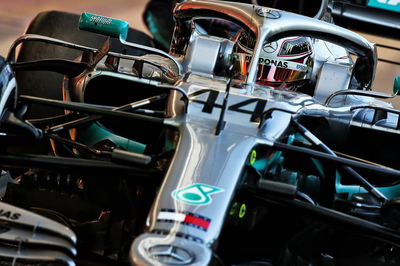
Those who predicted a close season off the back of testing alone fell short of the mark, as Ferrari struggled to get on top of its complex SF90 until after the summer break, while Red Bull made a slow start to the season at the beginning of its new Honda partnership before closing the gap in the latter stages.
Other patterns failed to continue into the season as Renault - who enjoyed an encouraging eight days of running - ended up losing its stranglehold over the midfield as McLaren beat the French manufacturer to fourth in the constructors’ championship. In 2018 the reverse was true, as McLaren ended testing with the second fastest lap time, only to spend much of the year fighting towards the lower end of the midfield with the second slowest car on the grid.
You have to go as far back as 2015 before the last time a team that clocked the overall fastest time in testing went on to win the championship. Ferrari set the pace in 2019, 2018, 2017 and 2016 but failed to dethrone Mercedes on each occasion.
Reliability and the amount of mileage completed throughout testing is usually a strong indicator of who is in good shape, but it remains difficult to decipher which team has stolen a march on its rivals. All 10 teams are wary about giving too much away and are keen to keep whatever cards they may boast close to their chest.
It is perhaps easier to work out who is in trouble, as recent testing failures have highlighted. Back at the start of the hybrid era in 2014, reigning champions Red Bull suffered a plethora of reliability problems as it endured a woeful winter test programme, which put it on the back foot for much of the season.
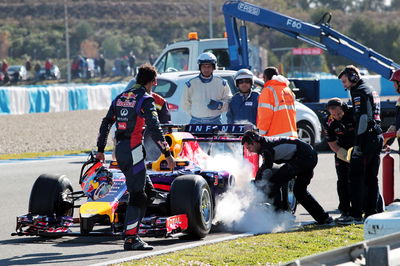
Fast-forward 12 months and it was McLaren - entering its much-hyped engine partnership with Honda - who had a pre-season to forget, which included new signing Fernando Alonso suffering a heavy crash at Barcelona that left him concussed.
The Woking squad was nearly seven seconds off the pace and also faced serious reliability problems throughout testing, factors which translated into its worst-ever F1 season in 2015 as it slumped to ninth in the standings.
Most recently in 2019, Williams had a nightmare start which it never recovered from. Production delays with its new car meant the Grove outfit missed the first two-and-a-half days of the opening test, while the performance of the FW42 was underwhelming when it finally hit the track.
The result of its disastrous winter left Williams anchored to the back of the grid for the entirety of the season as it ended its worst year in F1 with just a solitary point at the very foot of the constructors’ championship.
It is unlikely there will be drastic changes to the competitive order with stable regulations for 2020, though a closer fight between the converging top three of Mercedes, Ferrari and Red Bull is widely expected, while the entertaining midfield battle should be even more hotly-contested.
But with only a small picture to go by at the end of February, it is better not to get too carried away with the timesheets.
Instead, it is more likely we will have to wait until the season-opener in Melbourne before the truth is fully revealed...
